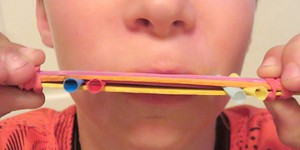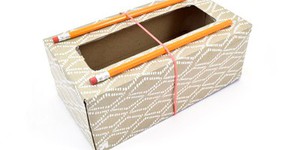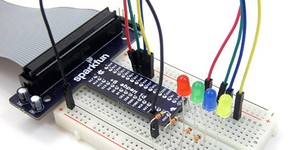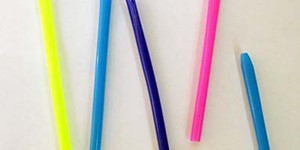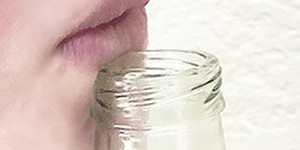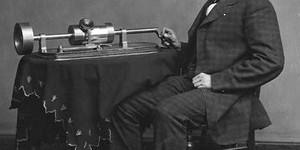Twelfth Grade, Music Science Experiments (45 results)
Fun science experiments to explore everything from kitchen chemistry to DIY mini drones. Easy to set up and perfect for home or school. Browse the collection and see what you want to try first!
While everyone else is paying attention to what they see, maybe you're focusing on what you can hear. Explore the physics of sound, musical instruments, and even how people respond when they hear music.
|
Select a resource
Sort by
|
STEM Activity
120 reviews
Can you name the bestselling musical instrument in the world? If you said harmonica, you are right! The harmonica was said to be patented in 1821 by Christian Buschmann, a 16-year-old German boy. Since then, it has become the top-selling instrument in the world and a household item in many places. Luckily, creating beautiful noise is not just an art—it is also a science! In this activity, you will design and explore your own harmonica-like instrument made from household items. Time to…
Read more
STEM Activity
73 reviews
Did you know that the modern guitar is an instrument that dates back over 4,000 years? The first guitar music was published in 1546, during a time when guitars still had strings made from animal intestines! While guitars have a long history, they are still extremely popular in modern day music. Have you ever wondered how they make the music you listen to everyday? In this activity we're going to make our own guitars, and experiment with the different sounds we can create.
Read more
Lights and music make a great combination! Getting sound and lights to complement each other just right helps set the mood for everything from DJ parties and concerts, to theater shows, the circus, and ballet performances. You can put together your own lights and music show using
a Raspberry Pi.
Check out the video to see what this simple, but fun, project looks like:
Once you have the basics down, you can keep tinkering with the circuit, the sounds, and the program to make fancier…
Read more
STEM Activity
16 reviews
Have you ever wondered how a musical instrument produces the beautiful sounds that it does? To make a certain note, the instrument has to make a certain sound wave. Depending on the instrument, the sound wave that is made can be affected by changing the length of part of the instrument, such as the strings in a piano or on a guitar, or a trombone’s air column. In this science activity, you will make your own musical instruments using drinking straws and explore how changing the length of the…
Read more
This is a rockin' project for guitarists with an interest in the physics behind the music. Have you ever wondered why the pitch of the note changes when you fret the string? You can find out for yourself with this project on the fundamental physics of stringed instruments.
Read more
STEM Activity
9 reviews
Have you ever heard of an “eardrum”? If the answer is yes, then you probably know that your eardrum is an essential part of your ear, allowing you to hear the world around you. But why do we call it a drum? It turns out that calling it a drum is a very accurate description of what your eardrum looks like, and what it does inside your ear. To understand how your eardrum works, imagine using a drumstick to bang on a real drum, and then touching the drum with your hand. When you do…
Read more
Have you ever seen a great movie and then rushed out and bought its soundtrack? Did the soundtrack bring back the thrill of an action chase? Or the sadness one of the movie's characters felt? Music is a big part of the movie experience. It intensifies the emotions in scenes so that you do not just jump when that hairy spider comes around the corner, you scream! In this music science fair project, you will find out if happy, sad, scary, and action scenes in movies use music with the same…
Read more
STEM Activity
12 reviews
Have you ever blown across a bottle's top and made a pleasant, resonant sound? If so, have you wondered how that note is made exactly? The exact note you hear depends on the resonant frequency of the air in the bottle. Musical instruments like ocarinas operate based on a similar principle. In this science activity, you will use bottles to investigate how the volume of the air in the bottle affects the pitch of the note that it makes.
Read more
Don't you just love listening to music? In the 1980s, people listened to music on the Sony® Walkman®. Now, people listen to their favorite tunes on MP3 players and on their Apple® iPhonesTM. But listening to music on devices actually started in the late 1800s and early 1900s. In those days, people would gather around their phonograph to listen to their favorite tunes—people were just as amazed with the phonograph as you would be to handle an iPhone. In this physics science…
Read more
Have you ever blown across a bottle's top and made a pleasant, resonant sound? If so, have you wondered how that note is made exactly? A bottle is actually what is called an air cavity, also known as a Helmholtz resonator. Ocarinas are examples of musical instruments of this type. In this science project, you will use bottles to investigate how the volume of air in the cavity affects the pitch of the note that it makes. All you need are some bottles, water, a ruler, and a chromatic tuner.
Read more
|
Explore Our Science Videos
How Antibiotic Resistant Bacteria Take Over – STEM activity
Build a Mobile Sculpture – STEM activity
Popsicle Stick Catapult



